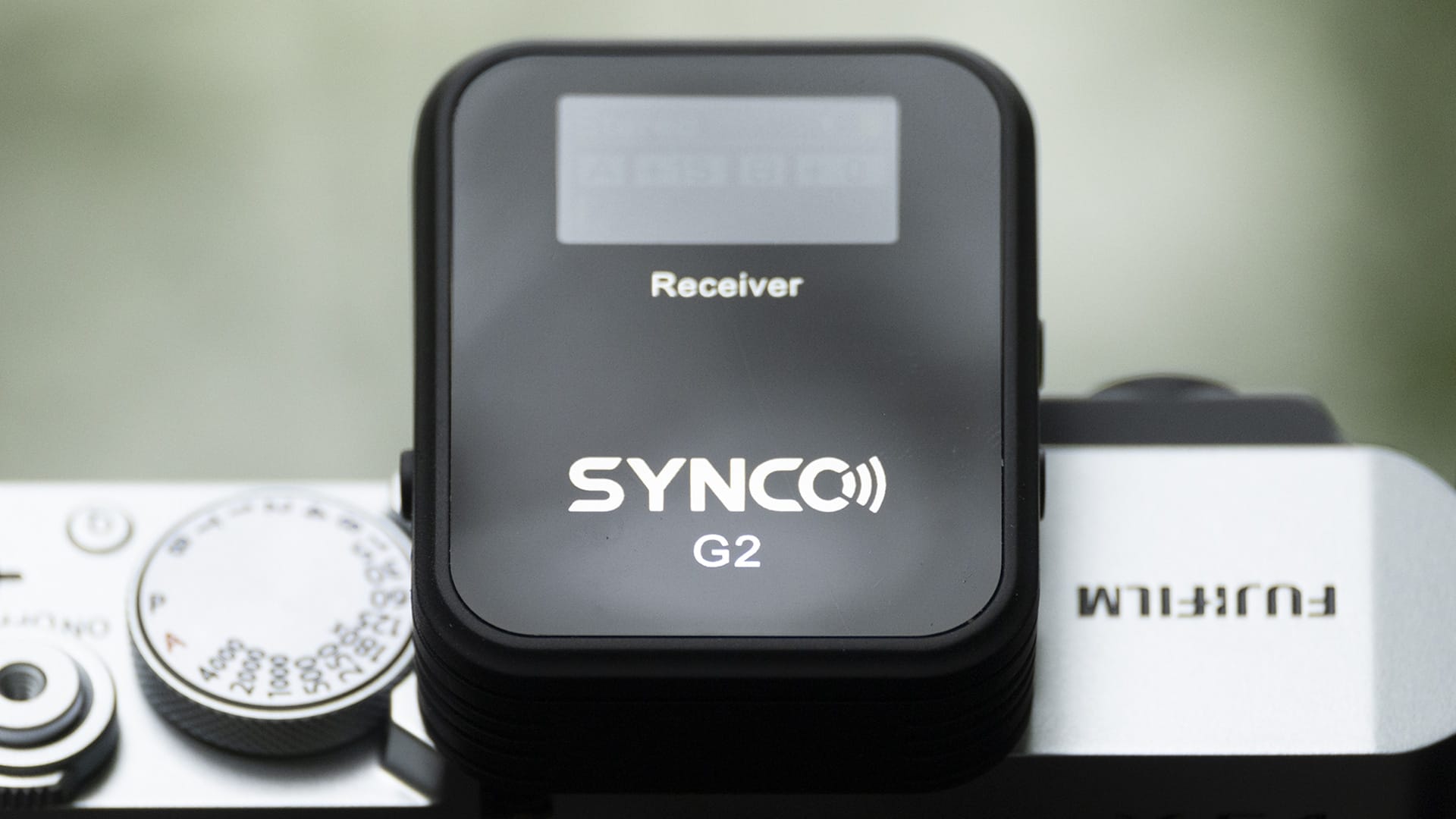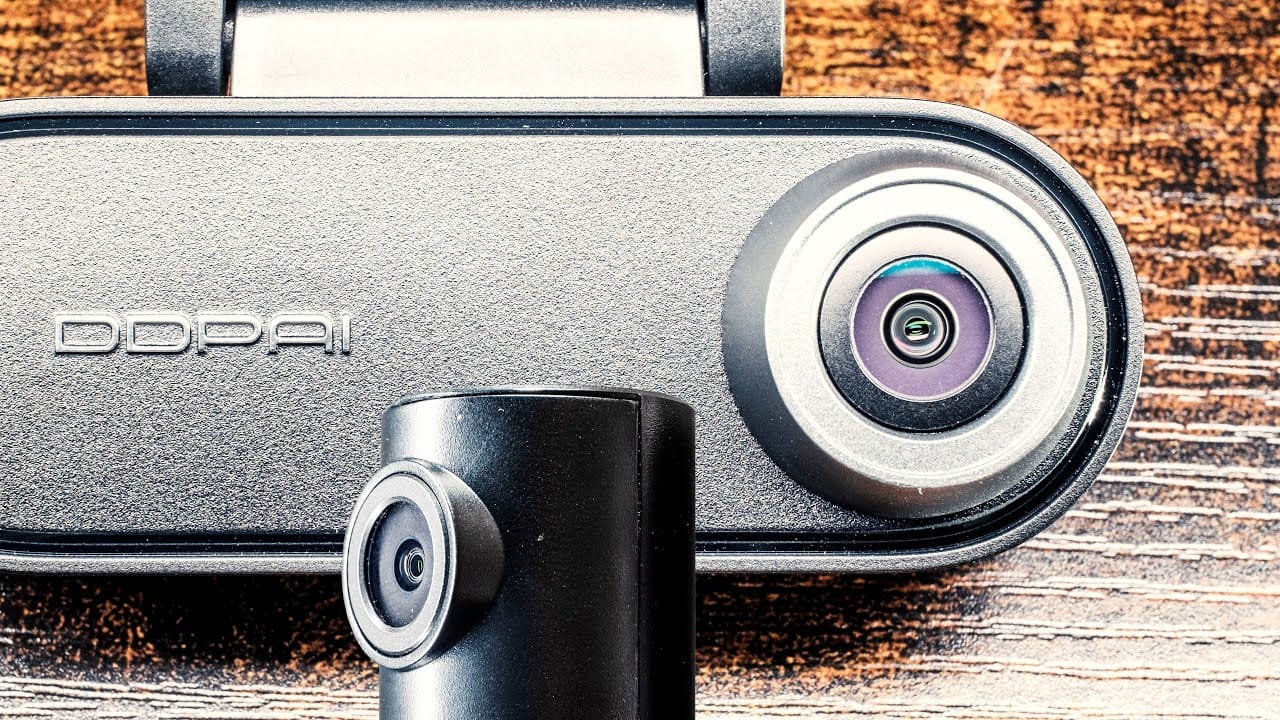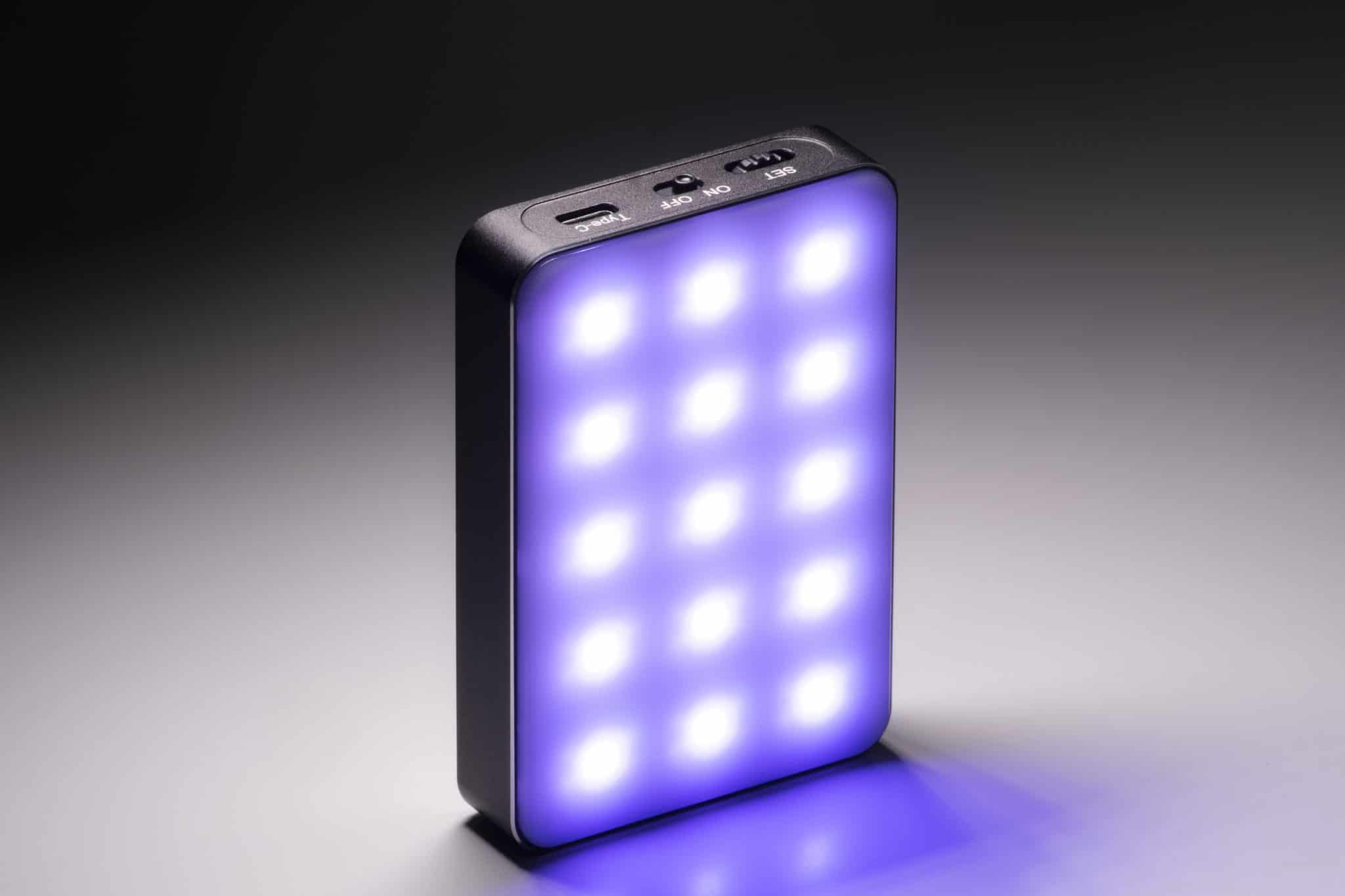The Synco G2 (A2) is a 129$ wireless 2.4GHz microphone system with screens that consists of two compact transmitters that have a built-in microphone. They can also be connected with lavaliers that are included in the kit. The two mics send a signal to the receiver that is plugged into a DSLR, camcorder via a 3.5mm jack or can even be connected to a phone. The main reason this system is worth looking at is indeed the low price.
Watch the 7-minute video review with range test below:
The G2 series is an upgrade of the G1 which was similar but didn’t have screens. The new TFT screens show the battery status, audio levels, which channels and which mics are being used.
Powering on and connecting the G2 devices takes a bit. The G1 probably has the quickest connecting I have ever experienced with any type of wireless microphone system. It only 2 seconds to power on and connect while the G2 takes around 6-7 seconds. I personally don’t think this is an issue since it doesn’t take a minute or so but it’s worth mentioning.
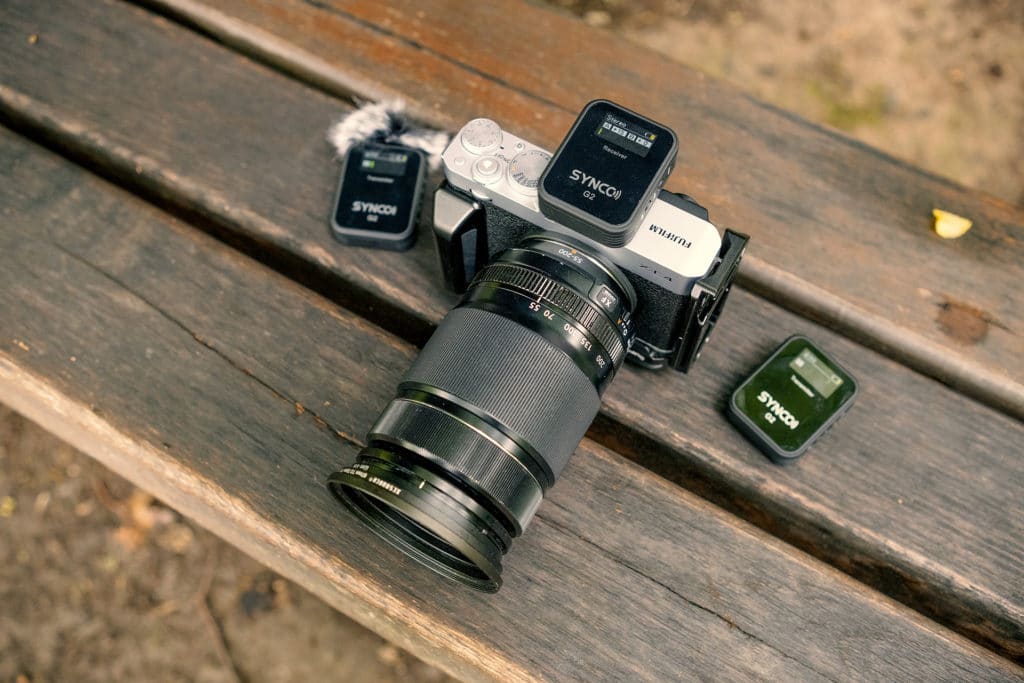
The white boxed letter or number on the screen indicates which microphone is active. For example “B +15” means that microphone “B “ is active and the audio level is set to +15dB. By pressing on the receiver’s “A” button on the side multiple times the audio levels can be changed. It goes from 0, 3, 6, 9, 12 to 15 decibels. To fine tune the audio levels I recommend adjusting the settings in the camera as well.
The audio levels are also visualized green to see that the transmitter is picking up sound and that the receiver also receives audio.
I should also mention that the screens aren’t very bright. For indoor shoots that shouldn’t be a problem but if it’s very sunny outdoors it can be a bit tricky to read the settings.
The receivers’ screens turn off after 2:45 minutes but can be turned back on by pressing the power button which also is used as a mute button. The receiver’s screen stays on which makes sense because the camera operator should always be able to see all settings.
The built quality is okay but certainly not premium and overall feels plasticky. The advantage is the weight which is only 34g per device. The buttons on the sides have been improved as far as I can tell and respond well.
A useful update is the included USB-C cable that has three connections to charge all devices at once.
The battery life varies but in my tests I could use all three devices at the same time for 6-7 hours depending on how often settings were changed and how long the screens were on.
In case you are not familiar with the G1, the G2 is pretty much identical when it comes to the features. The two microphones can be paired and connected to one camera. The channels get split into left and right (stereo). In post-production the audio track and channels can be duplicated. This is great because most mirrorless cameras, DSLRs or camcorders have a left and right audio channel but only one microphone input. So it’s not possible to physically plug-in two different mics at the same time. But by only using on channel this type of system allows the use of two microphones.
Watch our review of the G1 (without screen) below:
The receiver’s internal mic delivers good audio quality even with the deadcat on. With the clip on the back you can easily put it on someone’s shirt.
If you want to hide the transmitter which would be a more elegant solution for interviews it makes sense to use the included lavaliers which can be plugged into the receivers. The transmitter can then be put in a pocket or clipped onto a belt.
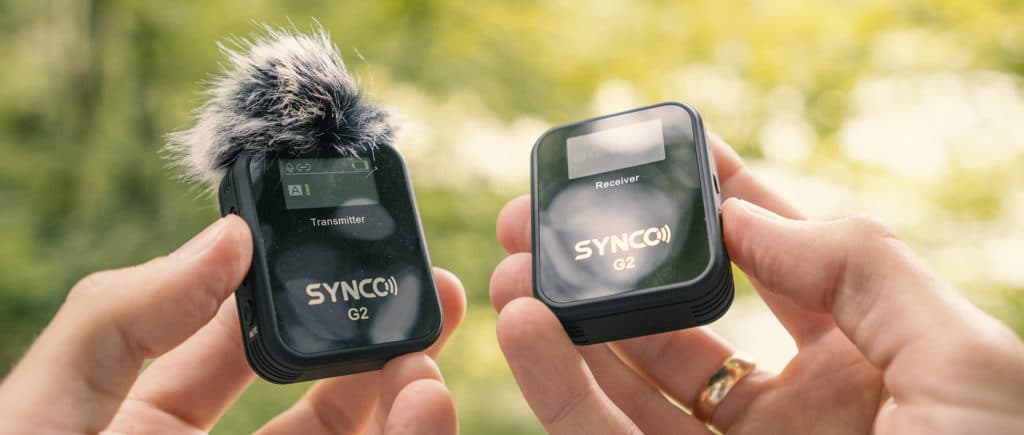
According to the manufacturer the range has increased compared to the G1. The 2.4 GHz system now reaches a distance of up to 70m when having a clear line of sight, instead of 50m. I personally have found it hard to verify this because there are plenty of factors, for example where the mics are placed on the person and how much interference there is. If I shoot an interview in a small office with a lot of other technology around the changes are higher to have some issues compared to when filming outdoors in a field or a park. In the past I had very short cut outs with the G1 when recording indoors but never any issues outdoors.
Overall the signal of the G2 seems to reach further but like I said, it’s hard to properly test it.
When it comes to the screen it would be nice to see the battery status displayed in percentage instead of just seeing a bar but I guess a lot of gear is set up like this. Another thing to be aware of is that the low cut filter and mute option are only being displayed on the transmitter but not the receiver. This means if the talent accidentally presses the mute button the camera operator won’t know if a cable is not plugged-in properly or something else went wrong. Not a big deal but worth mentioning.
If a range of 100m and perfect built quality is your main concern I recommend a premium solution from Sennheiser, Sony or RODE. They are priced between 350 USD and 800 USD are bigger in size, usually only contain one transmitter and don’t all even have built-in screens.
The one thing that makes this system useful for beginners and advanced filmmakers is that it’s easy to use and fool-proof. It doesn’t matter if you are filming with a phone or a mirrorless camera, when it comes to connecting the devices they do it all by themselves without any issues.
So overall, considering the price of 129 USD the Synco G2 (A2) is a solid system and one of the best and easiest to use cheap wireless systems currently available. And if you don’t need a display than I recommend taking a look at the Synco G1.
Written by filmmaker Moritz Janisch on June 28, 2021
